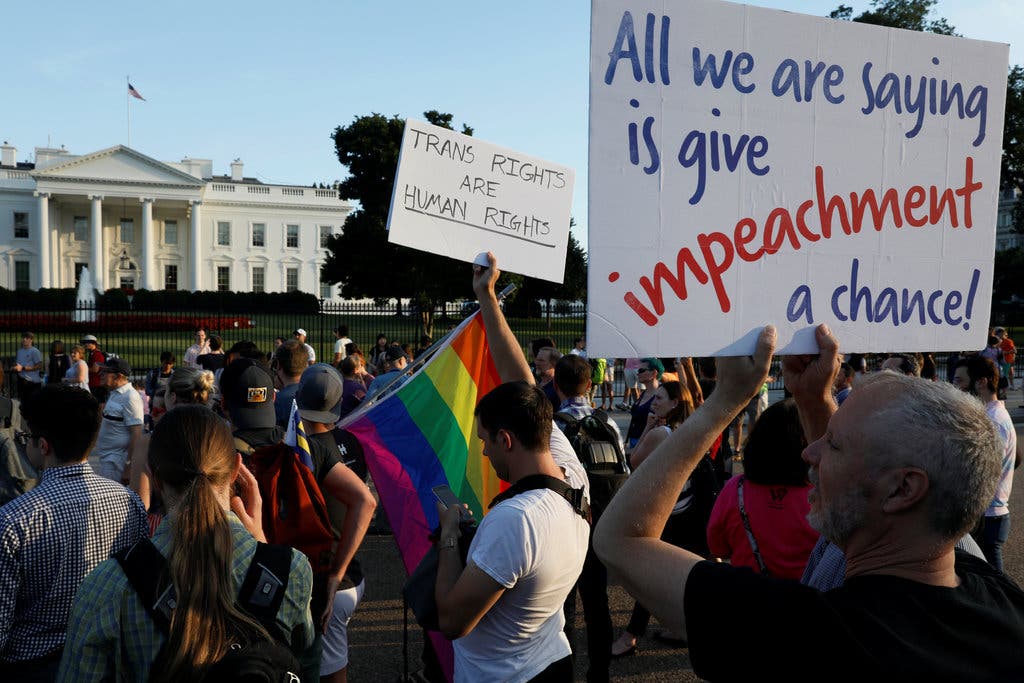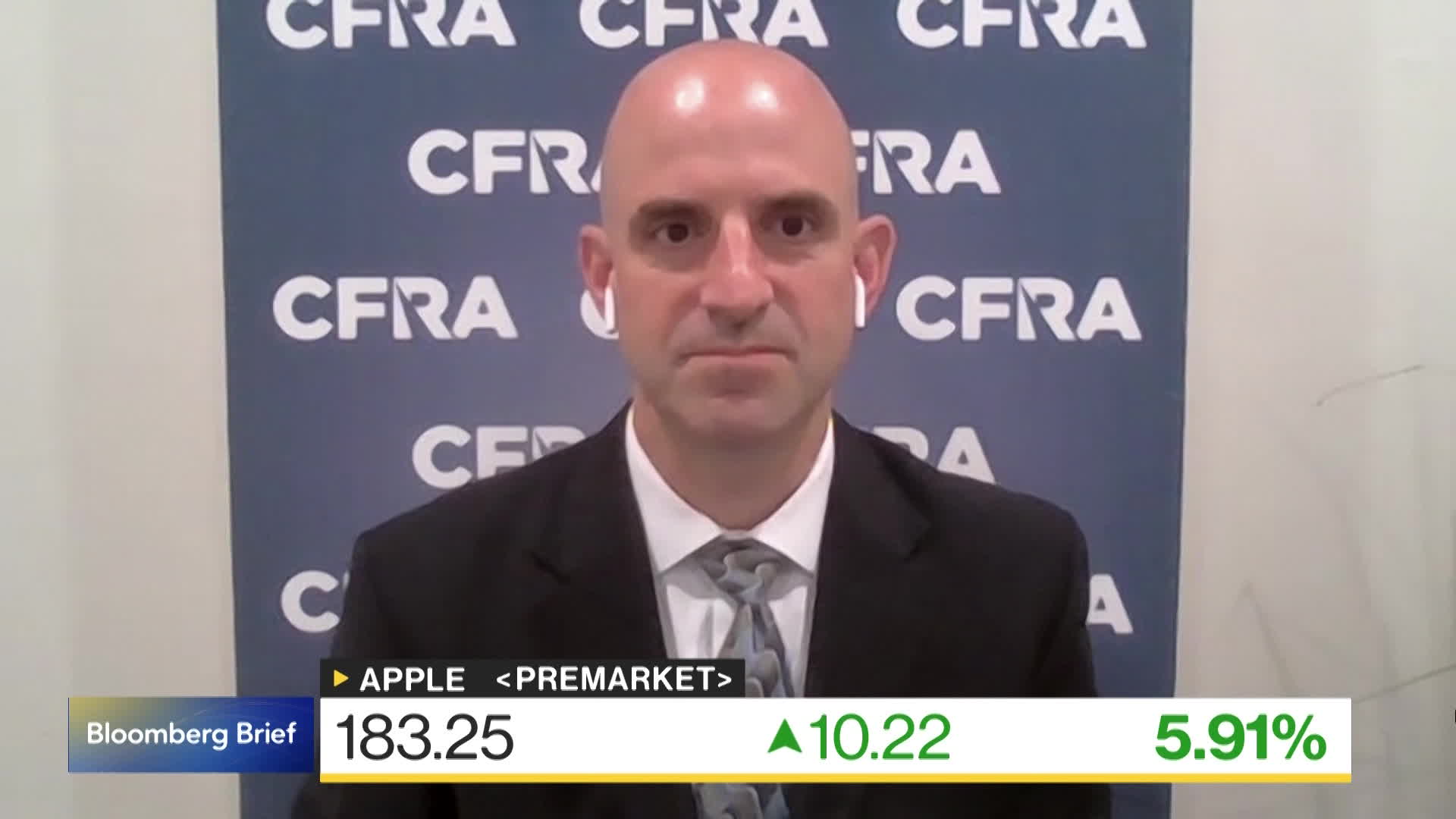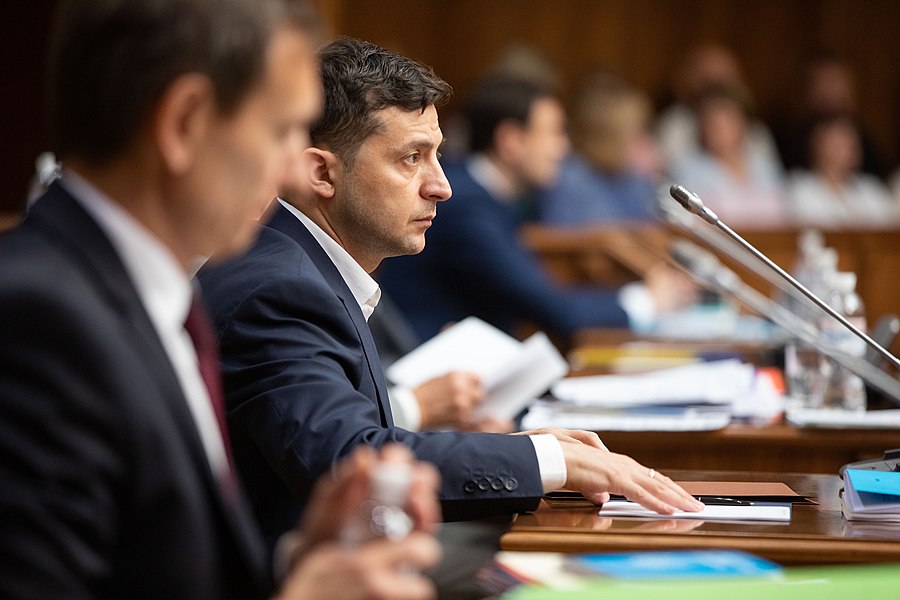Trump's Transgender Military Ban: Decoding The Double-Speak

Table of Contents
The Initial Announcement and Justification
On July 26, 2017, President Trump announced a ban on transgender individuals serving in the military via a series of tweets. He stated that the military "cannot be burdened with the tremendous medical costs and disruption that transgender in the military would entail." This justification, however, lacked concrete evidence and was quickly challenged. The administration’s official statements emphasized concerns about:
- Cost of healthcare: The claim of exorbitant medical costs associated with transgender service members was largely unsubstantiated and contested by numerous medical experts.
- Combat readiness: The assertion that transgender service members would negatively impact combat readiness was met with skepticism, lacking scientific basis and ignoring the successful service of transgender individuals in other militaries.
- Disruption and morale: The vague concept of "disruption" and impact on military morale were used without specific examples or data.
Key phrases used in official statements included "burden," "disruption," "medical costs," and "combat readiness," terms designed to frame the issue in a negative light. The contradictions were apparent: While emphasizing cost concerns, the administration offered no clear plan for managing the transition of already-serving transgender personnel. The immediate public and political reaction was largely one of outrage and condemnation, with widespread protests and legal challenges swiftly emerging.
The Legal Battles and Challenges
The ban immediately faced numerous legal challenges. The American Civil Liberties Union (ACLU), along with other organizations, filed lawsuits arguing that the ban violated the constitutional rights of transgender service members. These legal battles unfolded over several years:
- Timeline of key legal events: Numerous lawsuits were filed in various federal courts, leading to conflicting rulings. The initial injunctions temporarily blocked the ban's enforcement.
- Significant legal figures and organizations: Judges, lawyers, and advocacy groups like the ACLU, Lambda Legal, and GLBTQ Legal Advocates & Defenders played crucial roles in the legal challenges.
- Impact of each court decision: Court decisions initially favored the plaintiffs, highlighting the discriminatory nature of the ban and its impact on the lives of transgender service members.
The legal battles highlighted the lack of evidence to support the administration's claims and underscored the discriminatory impact of the policy.
The Impact on Transgender Service Members
The ban had a profound and devastating impact on transgender service members. Many faced:
- Mental health challenges: The uncertainty surrounding their future careers, coupled with the stigma and discrimination, led to increased rates of anxiety, depression, and suicidal ideation.
- Loss of career opportunities: Many were forced to leave the military, losing their livelihoods and the sense of purpose and community that their service provided.
- Fear and discrimination: The ban fueled a climate of fear and discrimination, making it more difficult for transgender individuals to serve openly and honestly.
While specific statistics regarding the mental health of transgender service members directly affected by the ban are difficult to isolate, existing data on the mental health challenges faced by transgender individuals in general, paints a concerning picture. The ban exacerbated these pre-existing challenges. The impact on military readiness and diversity is undeniable, as the ban prevented the recruitment and retention of qualified and dedicated personnel.
The Shifting Political Landscape and Biden's Reversal
President Biden, upon taking office, swiftly reversed Trump's transgender military ban via executive order. This action marked a significant shift in policy, reflecting a growing acceptance of transgender rights and a recognition of the importance of diversity and inclusion within the military.
- Key details of Biden's executive order: The order reinstated the right of transgender individuals to serve openly in the military, emphasizing that military service is a matter of individual merit and qualification, not gender identity.
- Arguments for and against the reversal: Supporters cited the importance of equality, inclusion, and military readiness; opponents continued to raise (often unsubstantiated) concerns about cost and disruption.
- Current status of transgender individuals serving in the military: Transgender individuals are now able to serve openly, though challenges related to implementation and ensuring full inclusivity remain.
The reversal, however, did not erase the damage inflicted by the ban. The long-term impact on trust and the recruitment of transgender individuals into the armed forces remains a critical area of ongoing discussion.
Conclusion: Understanding Trump's Transgender Military Ban and its Legacy
Trump's transgender military ban stands as a stark reminder of the complexities surrounding policies that affect vulnerable communities. The ban’s justification, riddled with contradictions and lacking factual basis, demonstrated a disregard for the rights and well-being of transgender service members. The legal battles and ultimate reversal underscore the importance of fighting for equality and inclusivity. The lasting impact on transgender service members and the broader military is undeniable, highlighting the need for continued vigilance in protecting the rights of all individuals, regardless of gender identity. We encourage further research into transgender military policy, participation in informed discussions on military inclusion, and advocacy for the rights of transgender service members, ensuring a more just and equitable future for all.

Featured Posts
-
 194 Billion Wipeout Tech Billionaires Losses Since Donating To Trumps Inauguration
May 10, 2025
194 Billion Wipeout Tech Billionaires Losses Since Donating To Trumps Inauguration
May 10, 2025 -
 Will Apples Ai Strategy Succeed A Critical Analysis
May 10, 2025
Will Apples Ai Strategy Succeed A Critical Analysis
May 10, 2025 -
 Oilers Vs Kings Game 1 Nhl Playoffs Predictions Picks And Betting Odds
May 10, 2025
Oilers Vs Kings Game 1 Nhl Playoffs Predictions Picks And Betting Odds
May 10, 2025 -
 Podpisanie Oboronnogo Soglasheniya Makronom I Tuskom 9 Maya Analiz I Prognozy
May 10, 2025
Podpisanie Oboronnogo Soglasheniya Makronom I Tuskom 9 Maya Analiz I Prognozy
May 10, 2025 -
 Technical Issue Grounds Blue Origin Rocket Launch Cancelled
May 10, 2025
Technical Issue Grounds Blue Origin Rocket Launch Cancelled
May 10, 2025
